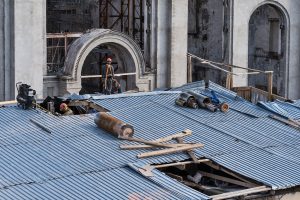How To Prioritise Construction Safety On A Project Site
Workplace safety is crucial to organisational success, and your construction business is no exception. Indeed, the construction industry is prone to risky situations and poses dangers to workers. An HSE survey estimates 61,000 cases of non-fatal construction accidents in 2021. Likewise, 39 fatal injuries to workers and 4 fatal injuries to members of the public were recorded. These statistics make it imperative to prioritise safety when on a project site. That said, here are some helpful ways to achieve this.
-
Don’t overlook protective gear

Even after substantial risk assessments and work environment controls, your workers still face potential safety hazards and health risks. A smart way to ensure safety is to provide personal protective equipment (PPE) for your employees. PPE refers to items that people wear to protect them against situations that can cause injuries and death. They also keep them safe from harsh weather conditions. PPES comprises gloves, eye protection, helmets, footwear, reflective clothing, safety footwear and harnesses, and respiratory protective equipment (RPE).
When choosing PPEs for your workers, ensure that they have the appropriate CE or UKCA marking. Also, you want to purchase items that are tailored to each worker’s size, weight and fit to promote comfort and productivity. Furthermore, ensure that multiple PPE items can be used together without compromising their function. For instance, avoid eye protection that affects your RPE’s seal. Consequently, alert your staff on the importance of wearing their PPEs, and the consequences of disregarding this requirement.
-
Prioritise health and safety training
Inexperienced workers can be a hazard to themselves and others on a construction site. However, you can prevent or control this by conducting health and safety training. Moreover, it helps you easily relay knowledge to experienced and new workers while cutting costs and boosting productivity. Likewise, a company with a long history of low injury rates will likely get more clients, so keep this in mind. To get started, it’s essential to ascertain the different types of training. For instance, induction training targets new workers and includes workplace orientation, equipment and machinery use, first aid, PPE use and maintenance, etc.
You also want to include refresher training to prevent your workers from disregarding the existing safety rules. Educating them about construction waste disposal is also important to prevent biohazards. For instance, putting plasterboard with biodegradable waste can produce a toxic gas called hydrogen sulphide. Therefore, train your workers to work with plasterboard disposal experts for the best results.
-
Ensure that your workers are aware of their responsibilities

Your workers also have their part to ensure safety at the construction site. You want to ensure that they have the needed skills and know how to use the equipment for lifting solutions and other heavy machinery before stepping on the construction site to prevent injuries or casualties. They must also cooperate with their principal contractor and other duty holders to promote a smooth operation. Complying with the site rules and procedures is also important, so keep this in mind. It’s also essential that they report any risks that can undermine their safety and other people at the construction site.

